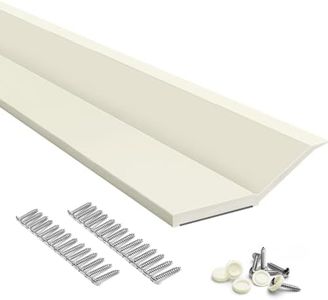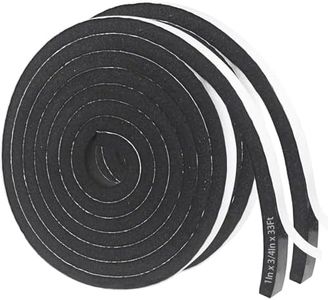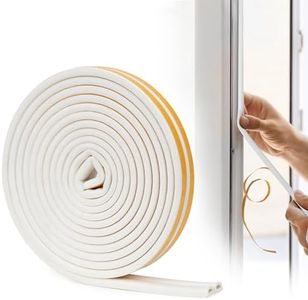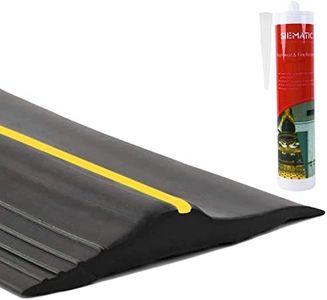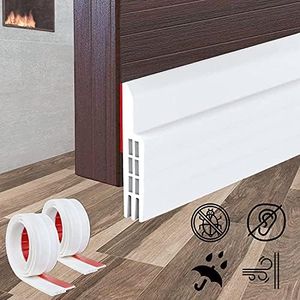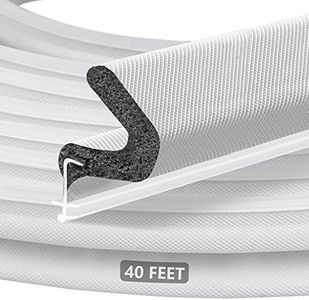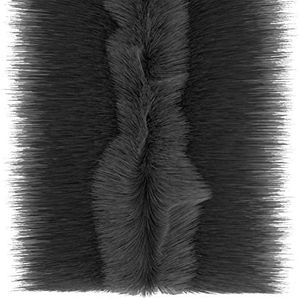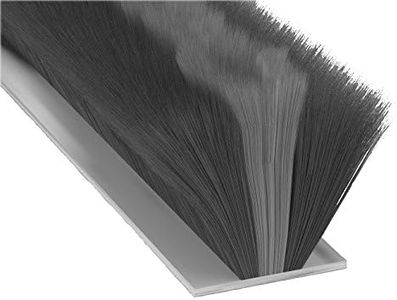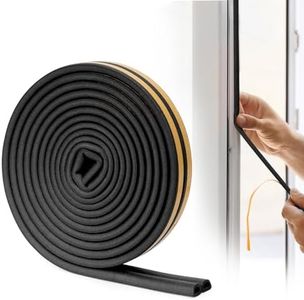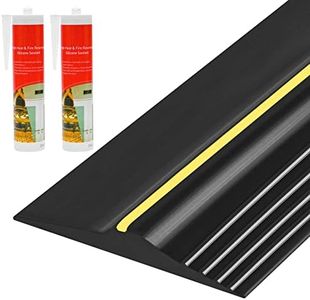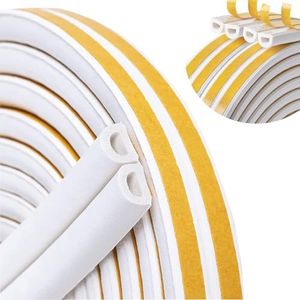We Use CookiesWe use cookies to enhance the security, performance,
functionality and for analytical and promotional activities. By continuing to browse this site you
are agreeing to our privacy policy
10 Best Weather Strippings
From leading brands and best sellers available on the web.By clicking on a link to a third party's website, log data is shared with that third party.
Buying Guide for the Best Weather Strippings
When choosing weather-stripping for your home or project, it's all about finding the right solution to keep out drafts, dust, moisture, and noise. Weather-stripping helps seal gaps around doors and windows, making your space more comfortable and energy efficient. The best choice depends on where you're applying it, the size of the gaps, how much the door or window moves, and what kind of durability you need. Understanding the different types and features will guide you to a product that truly fits your needs.Material TypeWeather-stripping comes in different materials like foam, rubber, vinyl, felt, and metal. The material affects how well it seals, how long it lasts, and how easy it is to install. Foam is easy to use but less durable; rubber and vinyl are more robust and flexible, ideal for areas that are opened and closed often; metal is long-lasting and good for high-traffic spots but may be harder to install. Choosing the right material depends on how often the door or window is used and the amount of protection you need.
Shape and ProfileThe shape or profile of weather-stripping determines how well it fits certain gaps and how it seals out air. Common profiles include V-strip, bulb, tape, and door sweeps. Bulb and V-strips are good for irregular gaps, tape is great for flat surfaces and smaller cracks, while door sweeps attach to the bottom of doors to block drafts. Consider the size and type of gap you need to seal; larger or uneven gaps often need thicker or more adaptable profiles.
Adhesive vs. Mechanical AttachmentWeather-stripping is attached either with adhesive backing or mechanical fasteners like nails or screws. Adhesive options are easy for DIY install and great for low-traffic or temporary solutions, but might not last as long. Mechanically attached weather-stripping is sturdier and better for high-use doors and windows, though installation takes a bit more effort. If you want a quick and simple fix, adhesive might work, but for long-term use, mechanical attachment is best.
Compression RatingCompression refers to how much the weather-stripping compresses when the door or window closes against it. High compression seals are more airtight but can make closing the door or window a bit harder. Light compression is easier to manage but might not block drafts as effectively. Pick a compression level based on how well the door or window closes and how important a tight seal is for your situation.
Size and LengthWeather-stripping comes in different lengths and widths to fit various applications. It's important to measure the area where you'll apply the weather-stripping so you buy the right size. Too small and it won't seal well; too large and it might be difficult to install or close the door or window. Always measure your gaps and the area to be sealed before choosing, and consider buying a little extra in case of mistakes.
Durability and MaintenanceSome weather-stripping options wear out faster than others, especially in high-use areas or extreme weather conditions. Materials like metal and heavy-duty rubber last longer, while foam and felt may need to be replaced more often. Maintenance is usually simple but should be checked regularly for wear and tear. If you want to minimize future hassle, pick a durable material for high-traffic spaces.

